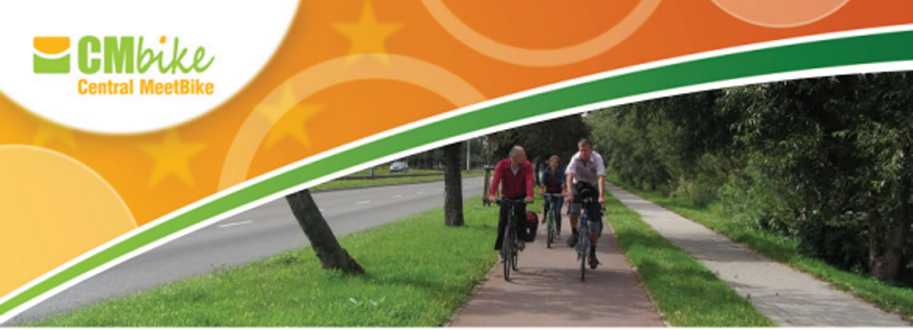9220598103

Fact Sheet T-03 - Options for financing measures for Cycling
Introduction
|
building 300 m of a cyde path |
marking 6,5 km of a bike lane |
|
signing 35 km of a cycle route network |
establishing and designing 6-7 residential streets |
|
purchasing 600 cycle stands |
providing 50covered cycle-parking spaces indudmg lighting |
|
establishing a pool of 50-100 rental blkes |
offering 100 bicycle training sessions |
|
organising 50 bkycle check days |
hiring a cycling coordinator for 1,5years |
Figurę 1: Whal can you do v»tti 50 000€? - slucfy resuts from Austna (aource. ThemarwLinden et al (2012))
Research has shown that irwestments in bicyde transport are promising in terms of cost-ratio aspects: "Paths and parking facilities tor bicydes are tar less expensive than for cars. Further-more. increased cycle use helps mini-mise the consequential costs of traffic in areas such as environment. health. and land use* (Thiemann-Linden et al (2012)). A study from Austria compared infrastrudure that can be implemented with a budget of 50.000C. The results are indicated in figurę 1.
However. cyding promotion still needs a solid and sustainable finandal back-ground to improve local conditions. A cyding master plan as an important part of the SUMP is recommended to define measures ot high priority (morę impact with less financial effort). This ensures efficient use of a city's cyding budget and/or funds. Additionally. com-pliance with technical regulations and indusion in a bicycle master plan incre-asingly is a requirement when deman-ding funding.
When deciding on measures to impro-ve the cycling infrastrudure. considera-tion ot low-cost measures as a serious alternative to cost-intensive reconstruc-tion measures is recommended. This could indude. for example. tuming a parking lane into a cyde lane and pain-ting pidograms or cycle lanes.
This fad sheet includes information about different options for finandng cycling measures. Ali options should be seen as comptementary tools.
Dedicated cycling budget and generał budget for transport
Promotion of cycling is mainly a task for municipalities. This indudes the need to provide a budget at the local levet to improve conditions for cycling. In German cities a budget often only exists for investments in infrastrudure. This enables the cycling officer or cycling unit to realize smali measures without much administrative effort. On the other hand it negleds that imple-mentation of fadlities independent of major roads and of soft measures can be much morę cost-effedive (e.g. re-consłruction of one accident hot spot vs. campaign for morę consideration and resped in traffic). Therefore it is recommended to open dedicated cycling budgets for the implementation of bicycle fadlities independent of main streets and for soft measures.
Bigger infrastrudure projects should generally be funded by the overall budget for investments in infrastrudure. where cyding needs should be consi-dered automatically in every infrastruc-ture planning process.
It is recommended that the local cycling strategy determines a coherent target network and main cycling routes. Measures of the cycling strategy should be prioritized in implementtion to ensu-re effident use of available budget.
According to German experiences it
y~\ TtCHNIKMf
LCjlD

Wyszukiwarka
Podobne podstrony:
Fact Sheet S-03 - Means of Public Relation Introduction The main challenge of public relations is to
SCM<^Fact Sheet H-01 - Developing a Cycling Network and GeneralDesign Standards for Bicycle
Fact Sheet S-01 - General Recommendations for Public Relations Introduction Actors in public relatio
image015 Audio Options for Speakers Soundcard Device Please select the device that is attached to yo
uvision,options,preprocessor ^ Options for Target Target 1 xj Device
Locking Options for Online DDL While an InnoDB table is being changed by a DDL operation, the table
Specifying Program Options There are several ways to specify options for MySQL programs: •
tice, implying option for one of several possibilities, or morę restric-tively, as a critical maieut
MCG SIM 4 MHz IRC FCRDIV CG MCGIRCLK 32 kHz IRC Clock options for some peripherals (see
Chapter4 Configuration Movie Engine Configure options for the Movie Engine feature. Page
Pakiety Wykorzystanie pakie ^ Project Options for Project5.exe (Win32 - Debug) l_??_1 W celu
Pakiety Wykorzystanie pakie Project Options for Project5.exe (Win32 - Debug) W celu wykorzystania
Pakiety Tworzenie pakietów zainicjować polecenie Project © Project Options for Packagel.bpl
DIALOGUE CHARACTER ACTINC THIS 15 A MODEL SHEET FOR A PROFOSED ANI MATĘ D SERIES OF THE HONEYMGONER5
Prezentacji Sprawozdań Finansowych (Framework for the Preparation and Presentation of Financial Stat
gear?ces Drill to match diameter of your bolt, or optionally for a bali bearing.
więcej podobnych podstron